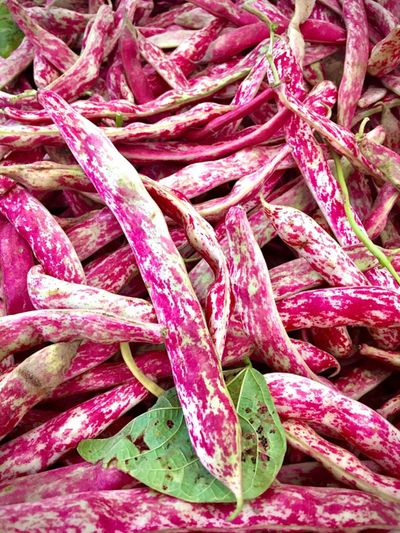What are Cranberry Beans?
The cranberry bean, also known as the Borlotti bean in Italy, is fairly difficult to find unless your community has a large Italian population or farmer’s market. Cranberry beans are usually found in the mass market as packaged and dried unless one encounters them in the independent local farmer’s market where they can be seen fresh with their beautiful coloration. More widely known as shell beans, the cranberry bean is unrelated to a cranberry plant, and in fact, most closely resembles the pinto bean, although the flavor is dissimilar. The exterior of the cranberry bean is a mottled cranberry hue, hence its common name, and the interior beans are a creamy color. Just as with all beans, the cranberry bean is low in calories, high in fiber, and a fabulous source of vegetable protein. Unfortunately, when the bean is cooked, it loses its lovely color and becomes a drab brown. Fresh cranberry beans are reported to taste akin to a chestnut.
How to Grow Cranberry Beans
Cranberry beans are an easy to grow plant. Neither pole nor bush beans, the cranberry bean grows on a stalk, which can attain a height of up to 6 feet (2 m.). Due to this great height, the cranberry bean needs to be staked and grows well planted in a large container, such as a half barrel or even a 1-gallon pot. Growing cranberry beans can also be planted against a traditional trellis support or a tepee-shaped support can be created, against which several plants can be grown. However you decide to grow and stake your cranberry beans, remember they prefer a warmer climate than most bean varieties and definitely dislike frost. Soil temperature for cranberry beans should be at least 60 degrees F. (16 C.) or more. Select an area with well drained soil and a pH of 5.8 to 7.0 or amend the soil to reflect the requirements.
Growing Cranberry Beans from Seeds
Cranberry bean plants can be started from either dried seeds or from fresh picked pods. To start from dried seeds, soak some quality potting soil with water until the consistency of mud, poke in a few dried cranberry bean seeds, and allow to dry slightly. Transfer the still moist soil and seed combination into smaller pots, cover with plastic wrap, and place in a warm area to germinate. To start cranberry bean plants from fresh picked pods, squeeze the bean pod gently to split and remove seeds. Lay the seeds out on paper towels or the like and air dry for about 48 hours. Fill planting pots with seed starting medium and place them in a pan of water with the liquid reaching to the halfway mark on the pot sides. Leave in the water bath for about an hour or until the soil surface is wet. Germination of your cranberry bean seeds will occur in about a week in warm conditions.
Cooking Cranberry Beans
This super nutritious bean variety is also super versatile in the kitchen. The cranberry bean can be pan fried, boiled and, of course, made into soup. To pan fry the cranberry bean, simmer in water for 10 minutes, dry off on a towel, and then sauté in a hot pan with a little olive oil. Cook until outer skins have crisped, season lightly with salt or seasoning of your choice, and you will have a crunchy healthy snack.
